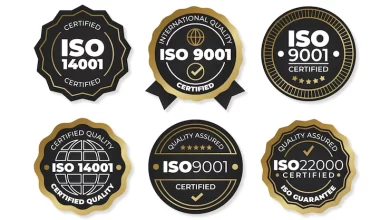The Importance of Preserving Your Family Tree – A Guide to Getting Started

Creating family trees is an integral part of preserving your heritage. They provide a visual representation of ancestry and can bring a sense of connection for some people.
Tracing your family history can be fun and often leads to unexpected discoveries like finding long-lost relatives. This makes it a perfect pursuit for families to share.
Start with What You Know
Whether you’re an experienced family historian or just getting started, it’s essential to have a system for organizing your research and keeping track of your findings. Otherwise, you’ll end up with a filing cabinet or hard drive full of papers and documents that will be difficult to sort through when it comes time to share your story.
One great way to get organized is by starting with what you know. That could mean contacting older living relatives to round up photos, negatives, or digital slides. Alternatively, it could be as simple as asking them to start a journal where they record events in their lives and personal reflections. The key is to make it as easy as possible for your relatives to share their history with you.
If you already have some information, the next step is to create a family tree. This can be done the old-fashioned way, on paper, or using a genealogy program online. A bare tree usually includes each family member, with birth and death dates at the top of the chart. Then, each sibling’s spouse and children are listed below them chronologically.
This can help you understand how historical events have shaped your family and learn about individual family members. Plus, sharing these stories with other family members is a great way to build connections and strengthen relationships.
Create Your Family Tree
As you gather your family history and records, it’s time to start building your tree. This will involve interviewing your parents, grandparents, and relatives to discover their relationships with one another. Start by recording their names, dates of birth and death, and known locations. Then, start tracing the lineage, connecting them with their siblings, children, spouses, and grandchildren. Be bold and turn to genealogy databases for help when you get stuck.
Family trees, explained the genealogical tree or pedigree chart, represent a person’s family history, showing the relationships between generations of ancestors and descendants. Family trees are fundamental in genealogy and help individuals organize and understand their family’s lineage.
Once you’ve gathered your information, it’s time to put everything together in a family tree chart. You can do this on paper or online, depending on your preference. Either way, it’s a good idea to centralize the documents you have collected in a single workspace to make it easier to reference them as you work.
Aside from being a great way to connect with your ancestors, making a family tree can also be an excellent tool for identifying genetic traits and conditions in the family. In addition, talking to your kids about the hardships that their ancestors experienced can cultivate compassion and empathy in them as they face their obstacles. It can also teach them how to find strength within themselves when things are difficult and appreciate those who persevered through hard times. This will ultimately serve them well in life.
Find Out What You Don’t Know
As you start to sort through that box of family photos you rescued from your parent’s house; you may begin to find names and dates that aren’t familiar. This is an opportunity to reach out to older relatives to ask them if they know anything about those people in the photo. They may even have family stories that contradict treasured family lore or that are just wild and interesting!
Another great way to discover what you don’t know is through online genealogy research tools. Several platforms allow you to search historical records, including birth and death certificates, census data, and newspaper archives. Many also have a family tree builder, which makes it easy to visualize where your ancestors came from and how they got there.
Some of these tools will even give you helpful hints about people in your family tree, such as the date that they were born and the name they were given at birth. However, it’s important to note that their hints aren’t necessarily inaccurate and sometimes misleading.
Donating your research and documents to genealogical and historical societies in the towns or cities where your ancestors lived is also a good idea. These organizations are well-protected from natural disasters and other catastrophes, and they will ensure that your work is accessible to future generations.
Gather Documents
Consider taking action if you have many old documents, letters, photos, and other heirlooms around your home or stored on hard drives or filing cabinets. They could provide valuable clues to your family history.
One way to preserve these items is to assemble a family history book. This project is time-consuming, but the result is a valuable family heirloom passed on for generations. If you decide to do this, collaborate with family members as much as possible to have various perspectives and insights on your ancestors.
Another option is to create a genealogy website. This is a great way to share your research with a larger audience and can also help you connect with family members who may have yet to be active in your previous efforts. It’s important to remember that when creating a genealogy website, you should use primary sources (documents and photos that are firsthand accounts of events or people) and secondary ones (reference materials such as books and articles).
If you’re not interested in publishing your work, consider donating it to the local genealogical or historical society in the towns and counties where your ancestors lived. These institutions are generally well-protected against natural disasters and can house your files in archival-quality folders or sleeves.



